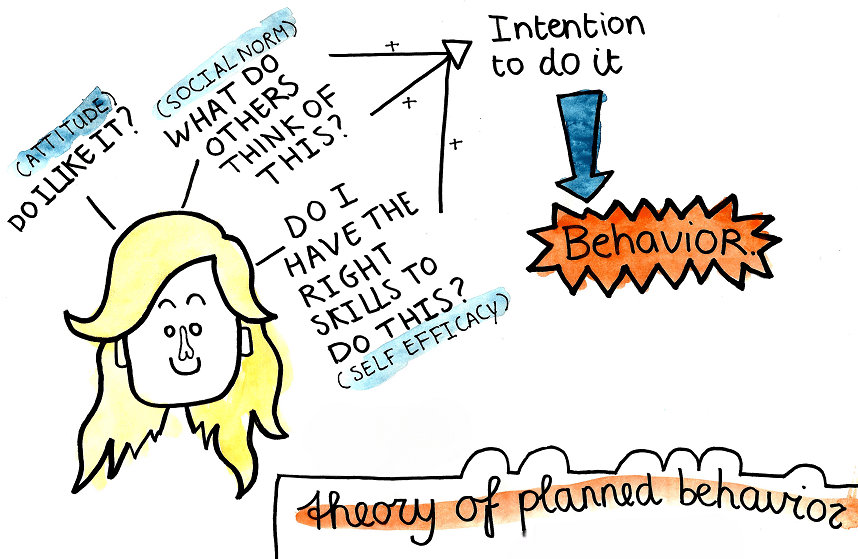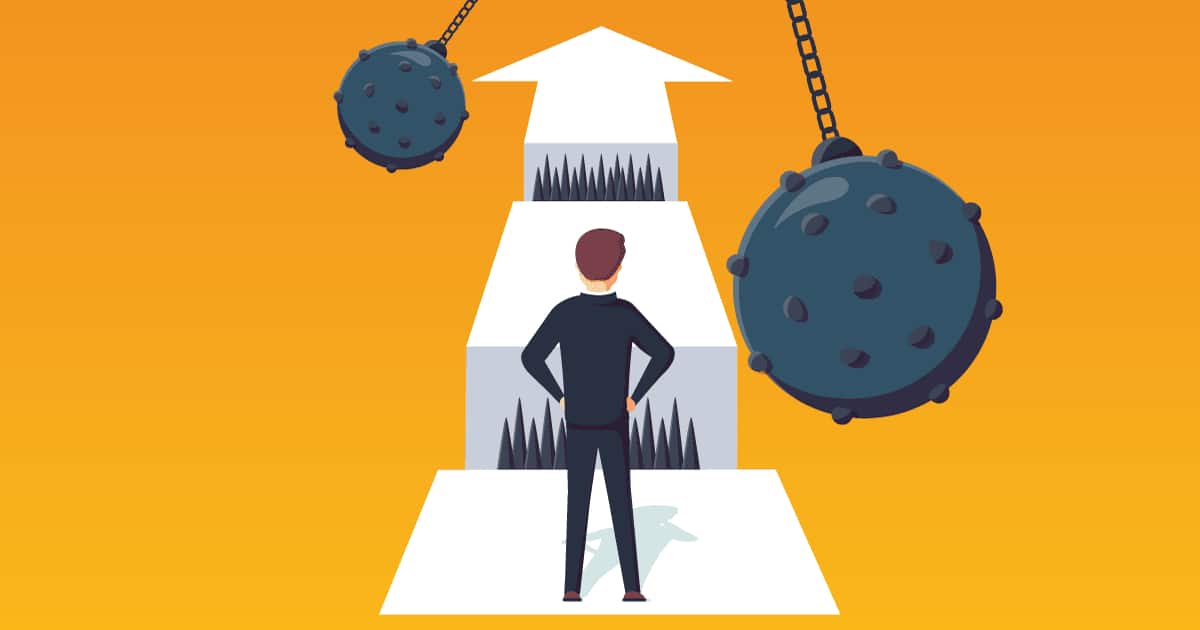The Theory of Planned Behavior (TPB) is a useful model for understanding human actions in various settings, including the workplace. This theory looks at how people’s thoughts and feelings shape their choices.
It helps explain why workers do certain things and avoid others.
The Theory of Planned Behavior suggests that a person’s attitudes, social norms, and perceived control over a situation all play a role in determining their actions at work.
By using this theory, managers can better grasp why employees behave in certain ways. This insight can lead to more effective policies and training programs.
TPB has been used to study many workplace behaviors. These include safety practices, energy saving, and even dishonest actions.
By looking at these areas through the TPB lens, companies can create better ways to encourage good behaviors and discourage bad ones.
Key Takeaways
- TPB examines attitudes, social norms, and perceived control to predict workplace behavior
- Managers can use TPB to create more effective policies and training programs
- TPB has been applied to various workplace issues, including safety, energy use, and ethics
Origins of TPB
The Theory of Planned Behavior (TPB) emerged as an extension of an earlier model. It added new elements to better explain human actions and decisions.
The theory’s roots lie in psychology and social sciences.
Development from TRA to TPB
TPB grew out of the Theory of Reasoned Action (TRA). TRA focused on attitudes and social norms as key factors in behavior. But it had limits. It didn’t account for situations where people lack full control over their actions.
Icek Ajzen developed TPB in the 1980s to address this gap. He added a new factor: perceived behavioral control.
This element reflects how easy or hard someone thinks it is to perform a behavior.
TPB kept the core ideas of TRA. It still looks at attitudes and social norms. But it expanded the model to cover a wider range of situations.
Psychological Underpinnings
TPB draws on cognitive theory and social psychology. It sees behavior as the result of a planned decision-making process.
The theory breaks this process into three main parts:
- Attitudes toward the behavior
- Subjective norms
- Perceived behavioral control
These factors shape a person’s intention to act. Intentions then lead to behaviors.
TPB assumes that people make rational choices based on the information they have.
The theory also considers background factors. These include personality, emotions, and past experiences.
These elements can influence a person’s beliefs and, in turn, their behavior.
Key Components of TPB
The Theory of Planned Behavior has three main parts that work together to predict how people will act. These parts help explain why people do what they do at work.
Attitudes
Attitudes are how people feel about a certain behavior. In the workplace, this means how workers view specific actions or tasks.
Attitudes toward sustainability can affect how employees act.
For example, if a worker thinks recycling is good, they’re more likely to do it.
Attitudes come from:
- Personal beliefs
- Past experiences
- Knowledge about the behavior
Positive attitudes usually lead to people doing the behavior more. Negative attitudes often make people less likely to do something.
Subjective Norms
Subjective norms are what people think others expect them to do. At work, this means how coworkers and bosses influence behavior.
Social pressure can affect intentions to join workplace health programs.
If everyone else is doing something, a person may feel they should too.
Subjective norms include:
- Peer pressure
- Company culture
- Social expectations
Strong subjective norms can push people to act in certain ways, even if their personal attitude is different.
Perceived Behavioral Control
Perceived behavioral control is how easy or hard people think it is to do a behavior. This affects whether they try to do it.
In the workplace, perceived control influences return-to-work intentions after an injury.
If workers think they can handle their jobs, they’re more likely to come back.
Factors that affect perceived control:
- Skills and abilities
- Resources available
- Obstacles or challenges
High perceived control often leads to stronger intentions to do a behavior. Low control can stop people from even trying.

Applying TPB in the Workplace
The Theory of Planned Behavior offers useful insights for shaping employee actions and developing effective HR policies. It helps explain how attitudes, social norms, and perceived control influence workplace behaviors.
Influencing Employee Behavior
TPB can guide efforts to change employee conduct.
Managers can target attitudes by highlighting the benefits of desired behaviors. They can leverage social norms through peer recognition programs.
Boosting perceived behavioral control is key. This means giving workers the tools, training, and authority to carry out target actions.
For health-related behaviors, companies might offer gym access or healthy meal options.
Clear communication of expectations is crucial. Regular feedback helps reinforce positive habits. Visual reminders in shared spaces can prompt good choices.
HR Strategies and TPB
Human Resources can apply TPB when crafting policies.
New initiatives should address all three TPB components to be effective.
For example, a sustainability program could include:
• Education on environmental impact (attitudes) • Team challenges and leader modeling (social norms) • Recycling bins and energy-saving equipment (perceived control)
TPB can be used to predict the adoption of new practices.
HR can survey staff on their attitudes, perceived norms, and sense of control. This data helps identify barriers to change.
Tailoring approaches to different departments or roles may be necessary. What motivates office staff might not work for field employees.
Self-Efficacy and TPB
Self-efficacy plays a key role in the Theory of Planned Behavior (TPB) and workplace behaviors. It shapes how people view their abilities and impacts their actions at work.
Role of Self-Efficacy in Behavior Change
Self-efficacy affects how people act at work.
It’s a person’s belief in their ability to do a task.
High self-efficacy leads to more effort and better results.
Self-efficacy impacts behavioral intentions in the workplace.
Workers who feel capable are more likely to try new things. They also stick with tasks longer when faced with problems.
Self-efficacy links to job performance and satisfaction. Employees with high self-efficacy often:
- Set higher goals
- Work harder
- Cope better with setbacks
Bandura’s Social Cognitive Theory
Albert Bandura developed Social Cognitive Theory.
This theory says that learning happens by watching others. It also states that people can control their own behavior.
Bandura’s work on self-efficacy fits into the TPB model.
It helps explain why some people act on their intentions while others don’t.
Social Cognitive Theory lists four ways to build self-efficacy:
- Mastery experiences
- Vicarious experiences
- Social persuasion
- Emotional states
These factors shape how people view their abilities at work. They affect whether employees will try new behaviors or avoid them.
TPB in Health Psychology
The Theory of Planned Behavior plays a key role in health psychology. It helps explain and predict health-related actions. TPB guides the creation of programs to improve people’s health choices.
Promoting Health-Related Behaviors
TPB looks at three main factors that shape health behaviors. These are attitudes, social norms, and perceived control.
Positive attitudes toward a behavior make it more likely.
Social norms also matter. If friends and family approve of a healthy choice, a person is more apt to make it.
Perceived control refers to how easy or hard someone thinks an action will be.
For example, TPB can explain why some people quit smoking.
Those who think quitting is good, have support, and feel able to quit are more likely to try.
TPB also applies to other health actions. It can predict exercise habits, food choices, and use of healthcare services.
Interventions and Programs Based on TPB
Health experts use TPB to create better programs.
These aim to change attitudes, norms, and perceived control around health behaviors.
Workplace health programs often use TPB ideas.
They might offer classes on healthy eating or stress management. The goal is to make healthy choices seem normal and doable.
TPB-based programs also target specific health issues.
For drinking, they might focus on changing views about alcohol use. For smoking, they could boost confidence in quitting skills.
Youth programs use TPB, too.
They teach job safety knowledge to help teens make good choices at work. This shapes attitudes and norms early on.
Methodological Considerations
When studying the Theory of Planned Behavior in workplace settings, researchers must carefully plan their approach. Two key areas require special attention: questionnaire design and statistical analysis techniques.
Questionnaire Design
Creating effective questionnaires is vital for TPB studies.
Researchers need to craft clear, specific questions that measure attitudes, subjective norms, and perceived behavioral control. These questions should relate directly to the workplace behavior being studied.
Questionnaires for TPB studies often use Likert scales to gauge responses. This allows for easy quantification of results.
It’s important to pilot test questionnaires before full-scale use. This helps identify any confusing or poorly worded items.
Researchers should also consider the length of their questionnaire. Too many questions can lead to respondent fatigue and inaccurate data.
Structural Equation Modeling
Structural equation modeling (SEM) is a powerful tool for analyzing TPB data.
It allows researchers to test complex relationships between variables.
SEM can help determine how well the TPB model fits the collected data. It can also reveal the strength of relationships between different TPB components.
Researchers must ensure they have an adequate sample size for SEM.
This typically means at least 200 participants, but more is often better.
It’s crucial to check that data meets the assumptions of SEM before proceeding with analysis.
This includes ensuring the normal distribution of variables and the absence of multicollinearity.
Challenges and Criticisms of TPB
The Theory of Planned Behavior faces scrutiny in workplace settings. Critics point out issues with bias and predictive power. These factors can limit the model’s usefulness in some situations.
Risk of Social Desirability Bias
Social desirability bias poses a challenge for TPB in work environments. Employees may report attitudes and intentions that seem more positive than their true beliefs. This can skew research results.
Self-reported data on workplace behaviors often suffers from this issue. Workers might claim stronger intentions to follow the rules or be productive than they actually have. This affects the accuracy of TPB predictions.
Researchers try to reduce this bias through careful survey design. Anonymous reporting can help. So can using objective measures alongside self-reports. Still, social desirability remains a key concern when applying TPB to workplace studies.
Predictive Validity and Limitations
TPB’s ability to predict actual behavior has faced questions. Studies show mixed results for its predictive power in work settings. The link between intentions and actions is not always strong.
Several factors can weaken this link:
- Time gap between measuring intentions and observing behavior
- Changing circumstances in the workplace
- Habits that override stated intentions
- Limited control over some work behaviors
TPB may not fully capture the complexity of workplace decision-making. It focuses on rational processes. However, emotions and unconscious factors also play a role. This can limit its effectiveness for some workplace behaviors.
Researchers continue to refine TPB to address these issues. Adding new variables or combining it with other models can improve its predictive validity.
Extending TPB
The Theory of Planned Behavior can be expanded to better explain workplace behaviors. Adding new factors and considering emotions can improve its predictive power.
Incorporating Additional Predictors
Research has extended TPB by adding new variables to the model. These additions aim to increase its ability to predict behaviors in work settings.
Past behavior is one important factor. It can help forecast future actions more accurately. Moral norms also play a role in decision-making at work.
Perceived behavioral control can be split into two parts:
- Self-efficacy: A person’s belief in their ability to perform a task
- Controllability: The extent to which a person feels they can control the outcome
Environmental cues in the workplace can trigger certain behaviors. Studies have explored how office layout and equipment availability affect eco-friendly actions.
Emotions as an Influencing Factor
Emotions have a strong impact on workplace behaviors. They can override logical decision-making processes in some situations.
Positive emotions like excitement or pride can boost motivation. This may lead to increased effort and better performance. Negative emotions such as frustration or anxiety can hinder productivity.
Recent TPB models have started to include emotional factors. These additions help explain behaviors that don’t follow purely rational patterns.
Emotional intelligence is key in managing workplace emotions. It allows individuals to recognize and regulate their feelings effectively.
TPB and Environmental Behavior
The Theory of Planned Behavior helps explain and predict environmental actions in workplaces. It looks at people’s views, social pressures, and control over green behaviors.
Promoting Recycling and Sustainability
TPB aids in boosting recycling and sustainability efforts. Companies use it to shape employee attitudes about these practices. They highlight benefits and make recycling easy.
Social norms play a big role. When coworkers recycle, others tend to follow. Managers can set good examples to encourage staff.
Perceived control matters, too. Workers need to feel able to recycle properly. Clear bins, signs, and training help. Some firms give rewards for meeting green goals.
TPB-based programs often lead to more recycling in offices. They can cut waste and energy use. This saves money and helps the planet.
Effectiveness in Predicting Pro-Environmental Behavior
TPB is good at forecasting green actions at work. It looks at intent, which often leads to real behavior. Studies show it can predict things like energy saving.
The model works for many eco-friendly acts. These include using less paper or taking public transport. It helps explain why some staff are greener than others.
TPB reveals barriers to pro-environmental behavior too. Maybe workers think green acts take too much time. Or they feel one person can’t make a difference.
Knowing these issues lets firms tackle them head-on. They can give info on impact or make green choices easier. This boosts the chances of success for environmental programs.
TPB in Changing Organizational Practices
The Theory of Planned Behavior offers insights into how organizations can effectively implement changes and manage their environmental impact. It focuses on employee behavioral intentions and the factors that influence them.
Implementing New Policies and Practices
Organizations often face challenges when introducing new policies. TPB helps predict how employees will react to these changes. It looks at attitudes, social norms, and perceived control.
Managers can use TPB to design better implementation strategies. They can address concerns and build support for new practices. This might involve clear communication about the benefits of change.
TPB suggests that employee intentions strongly influence actual behavior in the workplace. By shaping these intentions, organizations can more effectively roll out new policies.
Managing Workplace Environmental Impact
TPB provides a framework for understanding how to promote environmentally friendly behaviors at work. It can guide efforts to reduce energy use, including heating, and improve recycling practices.
Studies have applied TPB to explore environmental behavioral intentions in the workplace. These show that employee attitudes, social pressure, and perceived ease of action all play roles.
Organizations can use TPB to design better green initiatives. This might include improving infrastructure to make eco-friendly choices easier. It could also involve creating social norms that support sustainable practices.
By addressing these factors, companies can increase the likelihood that employees will engage in environmentally responsible behaviors at work.
Potential Advances in TPB
Future TPB research in the workplace could explore new areas. One option is looking at how technology affects behavioral control.
Virtual work may change how people view their ability to perform tasks.
Another direction is studying TPB across different cultures. Work norms vary globally, which could impact the model’s application. Cross-cultural studies may reveal new insights.
Researchers might also examine TPB’s link to specific work outcomes. This could include job performance, safety behaviors, or innovation. Such studies would expand TPB’s practical value for organizations.



